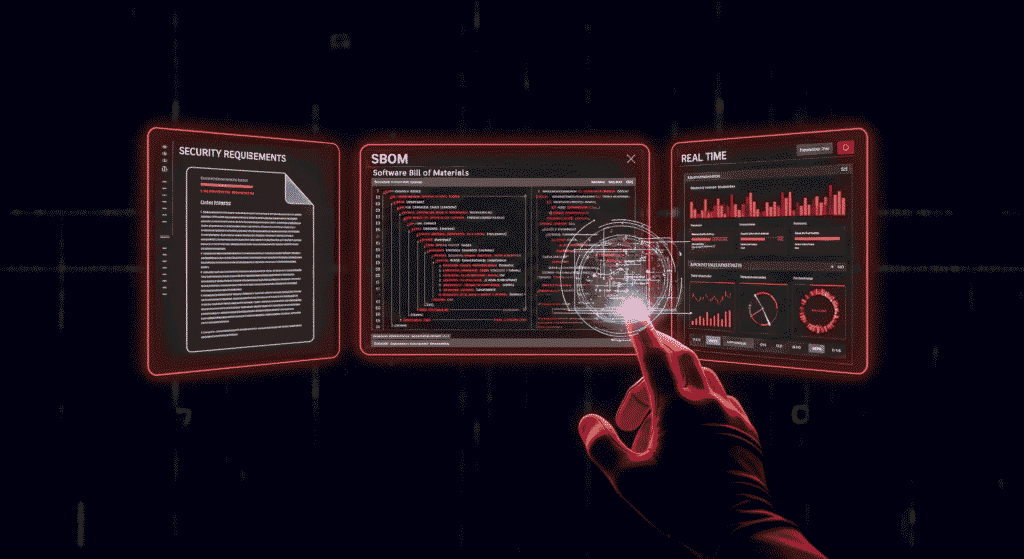Critical 3 CRA Compliance Deadline Strategies That Will Transform Your Product Future in 2025
When you searched for ‘CRA compliance deadline’ at 2 AM, you weren’t looking for outdated advice—you needed current, actionable insights. Meet Sarah, a software product manager who just discovered why the EU Cyber Resilience Act matters more than ever in 2025…
The Bottom Line: What 2025 Data Reveals About CRA Compliance Deadline
The EU Cyber Resilience Act entered into force on December 10, 2024, with vulnerability reporting requirements starting September 11, 2026, and full compliance mandatory by December 11, 2027. That gives you less than three years to completely transform your product security approach.
The Avoidance Path: When others ignored CRA compliance deadline preparation… Manufacturers who wait until 2026 will face rushed implementation of complex reporting obligations, risking market access across the entire European Union—worth over €17 trillion in GDP.
How CRA Compliance Deadline Actually Impacts Your World in 2025
The CRA will obligate all products with digital elements, including their remote data processing, put on the European market to follow this regulation. This isn’t just software—it’s IoT devices, connected appliances, automotive systems, and any product that processes data digitally.
Manufacturers are required to ensure all OSS components are up-to-date, secure, and compliant with licensing terms, with contingency plans for “abandoned” open-source projects. Your entire software supply chain needs documentation, monitoring, and security validation.
The reality check: If you sell any digital product in the EU after 2027, compliance isn’t optional—it’s survival.
Your 3-Step Action Plan: Mastering CRA Compliance Deadline Preparation
1. CRA Compliance Foundation: Start Your Security Documentation Now
Article 31 requires documentation containing all information demonstrating that the product and processes comply with essential CRA requirements, including all elements listed in Annex VII.
Create a compliance roadmap identifying every digital component in your products. Map your software dependencies, third-party libraries, and data processing flows today—not in 2026.
2. Software Bill of Materials Implementation: Build Your SBOM Strategy
The SBOM must be in a commonly used, machine-readable format and include, at minimum, the top-level dependencies of the product. The EU CRA requires manufacturers create and maintain SBOMs for each product, capturing every software component from the operating system down to the smallest firmware module.
Implement automated SBOM generation tools now. Popular formats include SPDX and CycloneDX—choose one and start tracking every component version, license, and security status.
3. Vulnerability Management Optimization: Prepare Your Reporting Infrastructure
Starting September 11, 2026, manufacturers must comply with vulnerability reporting requirements. This means tracking, assessing, and reporting security issues within strict timeframes.
Set up vulnerability scanning pipelines, incident response procedures, and direct reporting channels to EU authorities. Test these systems now while you have time to refine them.

Frequently Asked Questions About CRA Compliance Deadline
When exactly does the CRA compliance deadline take effect for my products?
CRA reporting requirements become applicable on September 11, 2026, with all requirements taking effect on December 11, 2027. However, it’s recommended that companies commence CRA compliance projects as soon as possible due to the complexity involved.
Sarah’s Two-Path Discovery: The 3 Critical Decisions
Sarah’s company had two choices when facing the CRA compliance deadline. Here’s what happened on each path:
The Avoidance Path: When Sarah’s competitor ignored early CRA preparation…
- Rushed Implementation Crisis: They’re now scrambling in 2025 to document three years of product changes
- Supply Chain Chaos: Discovering critical open-source dependencies without security updates
- Market Access Risk: Facing potential EU sales suspension worth millions in revenue
The Advantage Path: When Sarah embraced CRA compliance deadline preparation…
- SBOM Mastery: Automated tracking revealed 15% faster vulnerability response times
- Documentation Excellence: Complete technical documentation attracted enterprise customers requiring compliance proof
- Competitive Edge: First-to-market advantage in EU regions where competitors delayed compliance efforts
What products are actually covered by the CRA compliance deadline?
The CRA applies to all “products with digital elements”—this includes software applications, IoT devices, connected cars, smart home products, and any hardware containing software components sold in the EU market.
How can I tell if my open-source components will meet CRA requirements?
Manufacturers must monitor for “abandoned” OSS projects and have contingency plans to address security gaps through in-house updates or component replacement. Create an inventory of all dependencies with last-update dates, maintainer activity levels, and alternative options.
The Verdict: Why CRA Compliance Deadline Preparation Matters More in 2025
Sarah’s early action saved her company from the chaos now hitting competitors who waited. The CRA compliance deadline isn’t just a regulatory hurdle—it’s a competitive transformation opportunity.
Companies starting now gain three years to build robust security practices, comprehensive documentation, and automated compliance systems. Those waiting until 2026 will rush through requirements, miss optimization opportunities, and face higher implementation costs.
Your next step: Begin your SBOM implementation this month. Start with your most critical product and expand systematically.
Essential Resource: For deeper insights into CRA technical requirements, check out the EU’s official Cyber Resilience Act guidance for complete regulatory details and implementation timelines.
To read more news about technology click here



